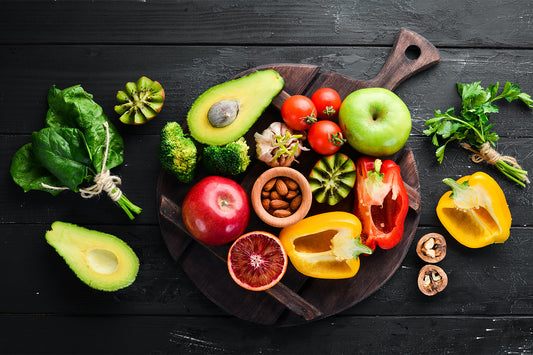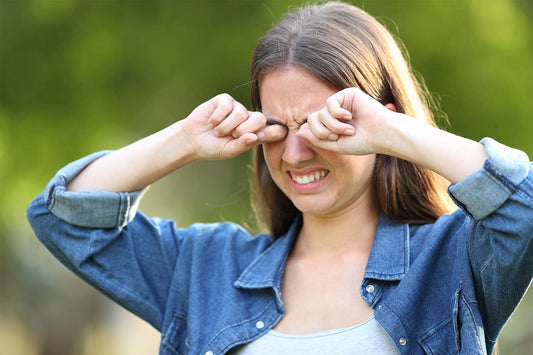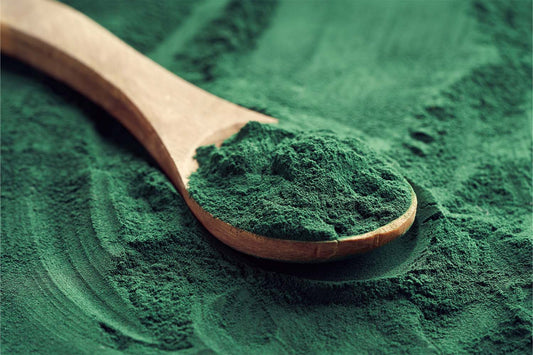Who knew tiny little creatures in the ocean could have such large implications for us? Tiny ocean creatures called krill play an essential part in ocean ecosystems, providing food for other organisms and snacking on even smaller organisms.
We may even be able to learn a thing or two by understanding what they eat and applying it to our own lives. Taking a closer look at what krill eat can give us a picture of their foods and how our diets may be able to benefit too.
What Are Krill?
Krill are small, pink crustaceans that live in the ocean — just about the size of a piece of gum. The most common species of krill is Antarctic krill (Euphausia superba), which lives near Antarctica in the waters of the Southern Ocean. Although these invertebrates are often confused for small fish, krill are more like small lobsters, as they have similar appendages and an exoskeleton.
Krill are a type of zooplankton species, so they are an incredibly small aquatic organism. Still, there is power in numbers. Krill travel together, and krill swarms are so large and packed together that they can be seen from space. These dense groups also make easy meals for larger sea creatures.
These small crustaceans are a valuable part of the food web, as they are a common food source for animals like blue whales, seals, penguins, seabirds, and ice fish. As food, the krill population is an essential part of ocean ecosystems — even humans can eat krill for nutritional value. However, krill and their diet are also important to the ecosystem and their surrounding environment.
Krill are so important and so abundant that the biomass of krill, or the total weight of all the krill in the world is estimated to be even larger than humans.
What Do Krill Eat?

Krill are omnivores, which means they eat both plants and animals. They are also known as filter feeders, meaning that they eat very small organisms by filtering them out of the water. In the winter months, krill are able to shrink themselves to need less food. They find most of their food near the ocean surface and under sea ice, where krill swarms spend most of their time searching for food.
Algae
One of the most significant parts of the krill diet is algae. Algae is a type of aquatic single-celled plant-like organism that is abundant in the ocean. Although different from plants we see on land, algae still undergoes photosynthesis and contains an important plant compound called chlorophyll.
Krill search for algae near the edge of ice surrounding Antarctica, which is surrounded by nutrient-rich waters to support algae.
Phytoplankton
Unlike zooplankton, which are part of the animal kingdom, phytoplankton are small, microscopic types of marine algae — aka microalgae.
Like regular algae, phytoplankton is an aquatic type of plant that goes through the same process as plants. These plankton absorb their food and energy from the sun, putting them at the bottom of the food chain.
Krill feed off these tiny creatures near the ocean surface as they seek sunlight. Phytoplankton are the foundation of food webs for many aquatic ecosystems, as they, too, serve as food for many sea creatures. Aside from krill, shrimp, prawns, snails, and jellyfish, all rely on phytoplankton for food.
Other Fish
In addition to the tiny plant-like organisms they eat, krill also consume other organisms — predominantly fish larvae. Fish larvae are the early form of fish, either eggs or newly developed fish.
Fish larvae are one of the few non-plant foods that krill eat. As filter feeders, they eat whatever foods they can handle as it floats in the ocean, and krill may also eat other tiny crustaceans called copepods.
Krill and Nutrition
Krill are more than just food for blue or baleen whales, they are also used as a supplement to a healthy diet for humans too. These crustaceans make for a popular nutritional supplement in the form of krill oil, which is extracted from their tissues.
Krill oil is often used as a more expensive substitute for fish oil supplements. Both of these supplements have gained widespread popularity for their omega-3 fatty acid content. Krill and fish oil both contain the two most hard-to-come-by omega-3 fats, docosahexaenoic acid (DHA) and eicosapentaenoic acid (EPA).
These two nutrients are only found in marine foods, but they offer many potential health benefits, like:
- Supporting a healthy blood pressure
- Maintaining healthy joints
- Supporting emotional wellness and cognitive function
- Supporting overall healthy heart function
The difference between fish and krill oil is that krill oil supplements also have the benefit of being high in antioxidants. The pinkish-red pigment of krill comes from a compound called astaxanthin in the foods they eat. As an antioxidant, astaxanthin may be able to help support healthy cells by tackling free radicals in the body, which can cause premature cell damage. The other main difference is that krill has polar lipids, namely phospholipids, which are better absorbed than the neutral lipids from fish oil.
What Should You Know About Krill and the Environment?
Krill are considered a keystone species, which means that without them, their environment would be significantly different. For starters, without krill, the other species in the ocean would be greatly affected since they rely on these crustaceans for food.
At the same time, krill may also play a valuable role in combating climate change. Krill play an important part in a process called carbon sequestration, a process that involves the capture and storing of carbon from the atmosphere.
Krill is a key middle ground part of the process, as they consume algae. Algae absorbs carbon dioxide from the environment through photosynthesis, and the carbon absorbed from the atmosphere is then turned into energy and stored in the algae, which releases oxygen back into the environment.
By eating algae, krill help keep the carbon dioxide from releasing back into the atmosphere. After krill digest the algae, their waste then floats down to the bottom of the ocean in the form of little pellets.
This impressive team helps keep carbon dioxide out of the atmosphere long term. In fact, krill capture an estimated 12 billion tons of CO2 each year. Climate change is driven largely by excessive amounts of carbon in the atmosphere, which leads to the warming of the planet.
With many people turning to krill oil as a nutritional supplement and increased fishery activity, krill communities are being threatened. As more krill are pulled from the ocean, it disrupts the food supply of other ocean creatures and tears apart ecosystems. At the same time, it decreases the potential for krill to support carbon sequestration.
What Are the Benefits of Eating Algae?
Krill rely on algae for a significant part of their diet, and as it turns out, we can actually learn something from them. By including algae in our diets, we can enjoy many potential benefits for ourselves and the world around us.
Nutrition
Like krill, algae is abundant in omega-3 fatty acids. Although, comparing the two in this way doesn’t do algae justice, as algae is extra special in that regard. Krill have such a high omega-3 content not because they produce the nutrients themselves, but because they eat algae. Algae has a high content of both DHA and EPA, offering the extensive health benefits of these two nutrients.
As a result, instead of eating krill, you can eat algae directly and obtain the same potential benefits, eliminating the middleman of the process entirely. On top of its omega-3 content, algae is also full of antioxidants. Both krill and algae contain omega-3s in a polar lipid form, but while krill only contains phospholipids, phototrophic microalgae contains phospholipids and glycolipids.
Despite the similarities, consuming algae provides even more benefits than krill. For starters, more people can enjoy algae. Although they are not technically fish, krill may also impact those who have seafood allergies, but algae helps eliminate that risk. Not to mention, the taste of algae supplements is much more tolerable than the fishy taste of krill oil supplements.
Environment
Algae is also a far more sustainable option than krill. Some people may object to eating krill because they follow a plant-based diet — fortunately, algae is a plant-like organism, meaning that eating algae is cruelty-free and an option for any lifestyle. In addition to the moral benefits, choosing algae is also better for the environment.
The benefits on the environment are two-fold. First, consuming omega-3s through algae means keeping more krill in the ocean, allowing them to continue the fight against excessive CO2 in the atmosphere. Second, the production of algae is highly sustainable.
For example, iwi life algae supplements are produced starting in algae farms in the desert that use underground saltwater aquifers. This process means that the only pieces you need are sunshine, CO2, and salty water with some added nutrients, with no creatures harmed in the process.
Add Algae to Your Diet
Krill are a vital part of ocean ecosystems supporting the diets of marine life and playing a valuable part in the environment. Although many people turn to krill as a way to supplement their diet, there is an even better option for getting DHA and EPA that is better for our health and our environment. Thankfully, you can easily add algae to your diet with iwi life.
One iwi life omega-3 supplement provides you with a combined 250 mg of DHA and EPA omega-3 fatty acids. With a daily supplement, you can support your overall health and wellness. Check out iwi life’s complete family of products for yourself and see all the ways the power of algae can benefit you and your health.
Sources:
Animals of the Ice: Antarctic Krill | Ocean Today
What is carbon sequestration | US Geological Survey
Astaxanthin in Skin Health, Repair, and Disease: A Comprehensive Review | PMC




















